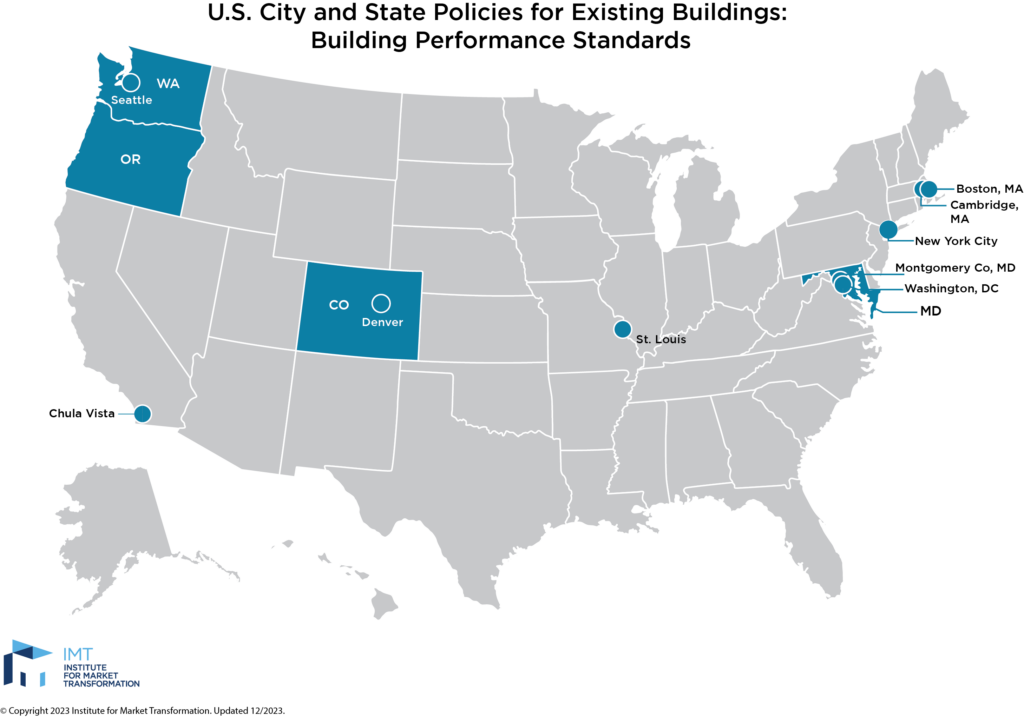The Latest on State Level Building Performance Standards
Introduction to BEPS and State Progress
This year, many states and municipalities in President Biden’s National Building Energy Performance Standards (BEPS) coalition will implement BEPS. This initiative takes a crucial step forward in advancing energy efficiency and reducing emissions in the building sector. As part of this effort, several states are making progress in developing their BEPS. Notably, Maryland and Massachusetts are crafting their standards, and other states are also working to establish their own.
Institute for Market Transformation’s latest map of U.S. cities and states with Building Energy Performance Standards (BEPS) policies for existing buildings.
Flexibility and Legal Challenges
One of the most compelling aspects of BEPS is their measurement flexibility. This approach allows building owners to choose effective methods for improving energy performance without being confined to prescriptive measures. This flexibility is critical because “prescriptive building codes that require explicit actions around energy efficiency… have not sufficiently improved energy performance,” as JLL highlighted in their recent report on BEPS. This approach encourages innovation and tailored solutions that can more effectively address the unique needs of each building.
A recent legal development underscores the significance of this flexible approach. The 9th Circuit Court of Appeals overturned a ban on new gas hookups that the city of Berkeley had passed. The court ruled that the Energy Policy and Conservation Act (EPCA) preempts state and local standards on appliances that could also have federal standards. This decision has sparked concerns about the legal standing of local decarbonization policies.
BEPS as a Path Forward
BEPS offer a way forward by setting performance-based targets for overall building emissions instead of imposing outright prohibitions like a direct ban on gas stoves or other specific appliances. Buildings that fail to meet these targets face penalties, which can vary by state. The enforcement and penalty structure of BEPS is a point of debate. Some states impose flat fines, while others calculate penalties based on square footage or the amount of CO2 emitted beyond compliance levels. This structure incentivizes building owners to reduce emissions by any means they choose whether through improved energy efficiency, cleaner energy sources, or other solutions.
The good news is that BEPS remain unaffected by the Berkeley decision. By focusing on overall performance rather than specific appliances, BEPS sidestep the preemption issues that led to the overturning of the gas ban. This means that states can continue to implement these standards without fear of similar legal challenges.
Conclusion: The Positive Impact of BEPS
The progress on BEPS across the country is a positive development for energy efficiency and emission reduction efforts. States should remain committed to their National BEPS coalition promise and continue to develop and implement these standards. By doing so, they can ensure that their buildings are more energy-efficient and environmentally friendly, contributing to climate goals and setting an example for others to follow.
Check out the latest from our blog…
Want to know more about our whole building Benchmarking Application?
Looking for additional resources?
Head to our Resources page for more industry perspectives and product information.
